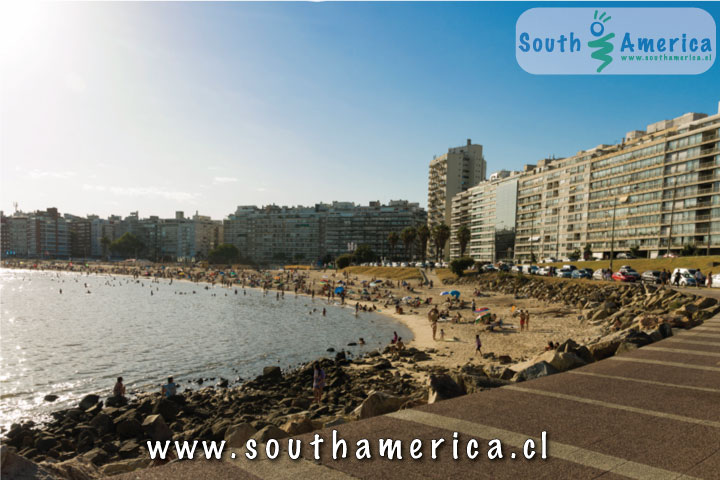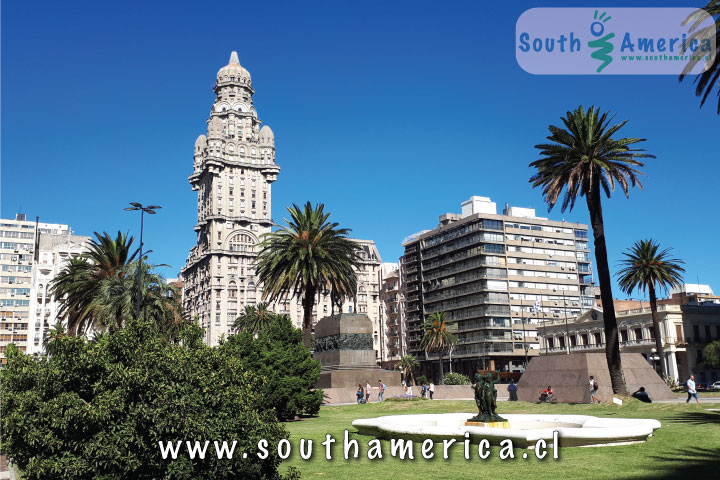Montevideo
Uruguay
General Information
Montevideo is one of the youngest capital in Latin America, founded between 1724 and 1730, and not becoming the capital of the country until 1828. It is also the Southern most capital of the Americas. It is a contemporary metropolis and port city, located on the beautiful beaches of Uruguay. The city is often considered to be a playground for Argentineans and Brazilians on their summer holidays. About half of the population of Uruguay lives in the city of Montevideo, so you can imagine the way it thrives as the center of Uruguayan culture, education, business and tourism. You will be happy to find that it is also one of the safest cities in all of South America, making it a great location to kick back and relax, or enjoy the sights.

What to See in Montevideo
Beaches: Pocitos, Buceo, Malvin, Playa de los Ingleses, Playa Verde, Punta Gorda and Carrasco. There is a inter-beach road running along the shore connecting Montevideo to Chuy (near the Brazilian border), so if you can't find the perfect spot at one beach, you can always move on to the next.
Plaza Cagancha / Plaza Libertad: A good starting point for most tourists. There are people standing around offering different tours of the old city. It is also the location of the main tourist office.
Teatro Solís: If you have been to Madrid you might have a case of déjá vu as this building is an exact replica of the María Guerro Theater.
The Gaucho Museum is nearby on Avenida 18 de Julio. It has a good mix of paraphernalia from the countryside and about the typical Uruguayan cowboy, the Gaucho.
Palacio Salvo: A unique designed spire rises from this building which still dominates the skyline and nicely contrasts some of the newer construction around it. At the time of its construction it was the tallest building in South America, although today it has been surpassed several times over. The original intention was for it to be a grand hotel, with a few posh permanent apartments, but this never worked and now it serves as an office building. It is located on Plaza Independencia.
Plaza Independencia is the gateway to old city (Ciudad Vieja). Here you can still see part of the old city wall that once protected Montevideo from invasions.
Located in the old city is the Plaza Constitución where you can see Montevideo's oldest building, the Cathedral. The cathedral has been restored, but still retains its colonial charm and external structure. The plaza is also home to the town hall. Here you can visit the Museo de Historia that while not the most interesting or glamorous of museums, it does have some insight into the city's history.
La Bolsa: The stock exchange of Montevideo is located just north of Plaza Constitución.
Mercado del Puerto: This open air fish market is similar to others you will find throughout South America, although there is something shabby sheik about this one. It is also one of the best places to have a lunch of fresh seafood prepared before your eyes. Try walking around and picking at all the smaller dishes on offer from each of the different booths. There are also several restaurants that offer steak. Mmmm!
Estadio Centenario: Sports enthusiasts most stop off here, where the original 1930 World Cup final was played, the winners of course being the host country, Uruguay.

Interesting Facts:
Another fun stop is South America's first monument on the subject of promoting sexual diversity. (I can't imagine where the next one will be). It demonstrates the liberal thinking held by some Uruguayans. It is located on Policia Vieja St., between Plaza de la Constitución and Plaza Independencia.
Avenida 18 de Julio which is a major street in the city is named for the day in which Uruguay gained complete independence from the two dominating countries, Brazil and Argentina. It is a major point of personal pride for many Uruguayans.
Did you know that the first naval battle of World War 2 took place just outside of Montevideo and is known as the Battle of the River Plate. It took place between the German ship Graf Spee and two British cruisers (Exeter and Ajax) and a New Zealand ship (Achilles).
Where to Shop
The Montevideo Leather Factory: If you are looking for a custom made jacket in a hurry check out this place which guarantees one to your specifications in 24 hours. (Plaza Independencia 832)
How to Get Around
You might want to try blending in with the locals and renting a bike or scooter so you can hop all around town. Most Uruguayans are unable to afford new cars due to the high import taxes, so it is often preferable to hop on a bike if you are only staying in city.
When to Go to Montevideo
During the Month of October there is Tango week, a great celebration for the whole city. You will notice that all of the holidays have different names. Uruguay has a strong secular government so Holidays like Christmas have been renamed to Family Day, or Holy Week to Tourism Week.
Try going when it is warm so you can bask in the sun in the sand, but avoid the peak of summer in February when everything is more expensive and the beaches are over crowded.
How to get to and from Montevideo
BY PLANE: From within South America there are direct flights from Buenos Aires, Santiago, Lima, Asunción, Sao Paulo and Rio de Janeiro. There are also a few flights from United States and Europe. The main airport of Montevideo is Carrasco International Airport which is only 18km (11 miles) from downtown.
BY BOAT: There are frequent ferries (via Buquebus) that link Buenos Aires and Montevideo.
BY BUS: The "Terminal Tres Cruces" is the main bus terminal in Montevideo (and the largest in the country). You can see destinations and departure times here: www.trescruces.com.uy (unfortunately there isn't a version in English for now).
Outside of the City
Punta de Este: This beach resort if located only 2 hours outside of the city, in a prime location on the point between the Atlantic Ocean and the bay to Rio de la Plata. This is by far the most famous beach in the area and is where the most fashionable jet set Uruguayans go to lay out in the sun. If you go in high season you will have difficulty finding a spot in the sand that isn't already covered with someone else's towel. Try coming in autumn when you can find a bit more elbow room, but stay on the bay side where there is less cool wind. If you do come in summer rent a car and continue North up the coast until you can find a more remote white sandy beach all to yourself. Be sure while in Punta del Este that you check out the amazing house of painter Paez Villaró. The white building without any straight lines looks more like a giant child's sandcastle with spires and playful details.
If you found this guide about Montevideo, Uruguay interesting or useful, let others know about it.

